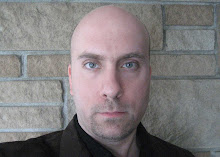Pay attention as frequently as possible throughout the day. This means frequently touching base with your sense of being present. Paying attention means regaining your sense of being present. Learn to contrast your sense of being present with every other aspect of yourself. Contrast any given emotional state with your sense of being present. Contrast your thought process with your sense of being present. By recognizing the difference between your sense of being present and every other aspect of yourself, you are paying attention. Each time you do this you vest subtle internal energy into your sense of being present and thereby increase it, expand it and prolong it. You grow more conscious.
Consciousness is what recognizes the difference between various internal states. The act of attention is brought to bear on obvious aspects of yourself and then leads into subtler aspects of yourself. Attention begins with outward behaviors and then leads into emotions. Attention is ultimately brought to bear on the source of these, identification and thought. The more you pay attention, the more subtle internal energy is reorganized and invested into consciousness. You become more conscious.
The contraction of negative emotions must be recognized and felt, otherwise the energy of which you consist remains bound in it. Without liberating your energy from the contraction of negative emotions, your power of attention will not become strong enough to bring to bear upon the subtler problem of chronic thought. Negative emotions are the fears and desires and aversions that arise from identification. Identification is generated by chronic thought. Chronic thought is your seemingly involuntary continuous thought process whose primary concept is "I." Chronic thought generates identification, and identification generates the contraction of negative emotions (fear and desire and aversion). Our behaviors are largely determined by our state of identification and the emotions that attend it.
Consciousness is not identification. Identification is the opposite of consciousness.
Contrast your given state with your sense of being present. Pay attention. The exercise of contrasting any given state with your sense of being present literally redistributes subtle internal energy, reinforcing your sense of being present, increasing it while simultaneously decreasing your given state of identification. Paying attention includes the feeling of being present. By truly feeling an emotion, you release the emotion. Paying attention to a negative emotion divests the negative emotion of its energy, thereby dissolving it. Negative emotions dissipate under the light of attention.
As your power of attention increases, you are able to recognize more of yourself. You recognize more of the various aspects of yourself. A powerful and subtle attention is required to grasp chronic thought.
Truly being present means to be continuously present, to remain present and not merely to touch base with your sense of being present. Sustained presence is full consciousness. The act of attention culminates in full consciousness, the ability to sustain one’s presence permanently. That is the aim of attention.
We begin by temporarily touching base with our sense of being present, and by doing so the subtle internal energy of which we consist is reorchestrated. We gain greater consciousness of ourselves, consciousness of the energy of which we consist. We gain mastery over the energy of which we consist. That mastery consists of a conscious unification of the energy of which we consist, a conscious unification of our being.
Self-mastery is full consciousness. A fully conscious being is master of himself. He is not a "separate self" but a whole being, a Microcosm.

No comments:
Post a Comment